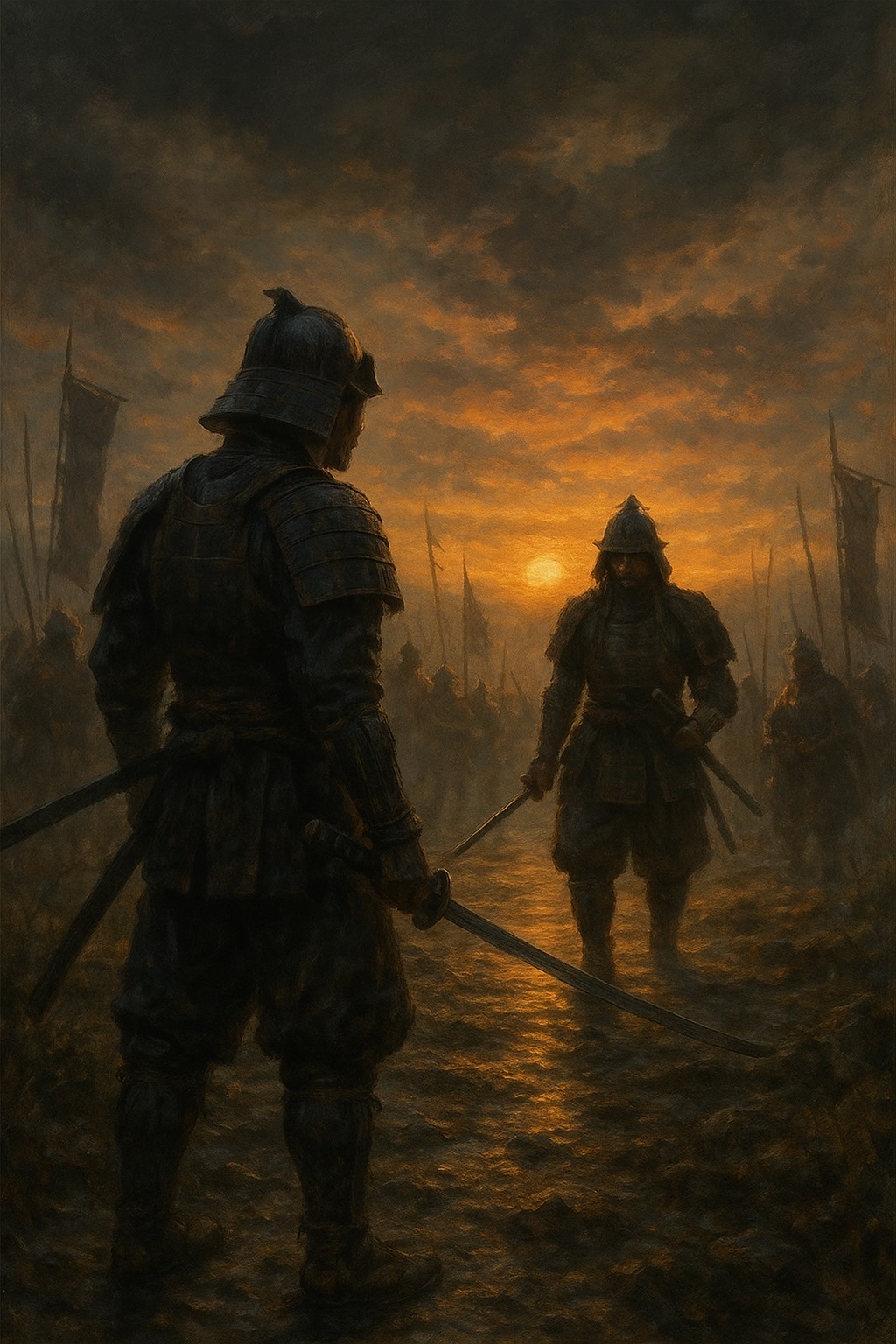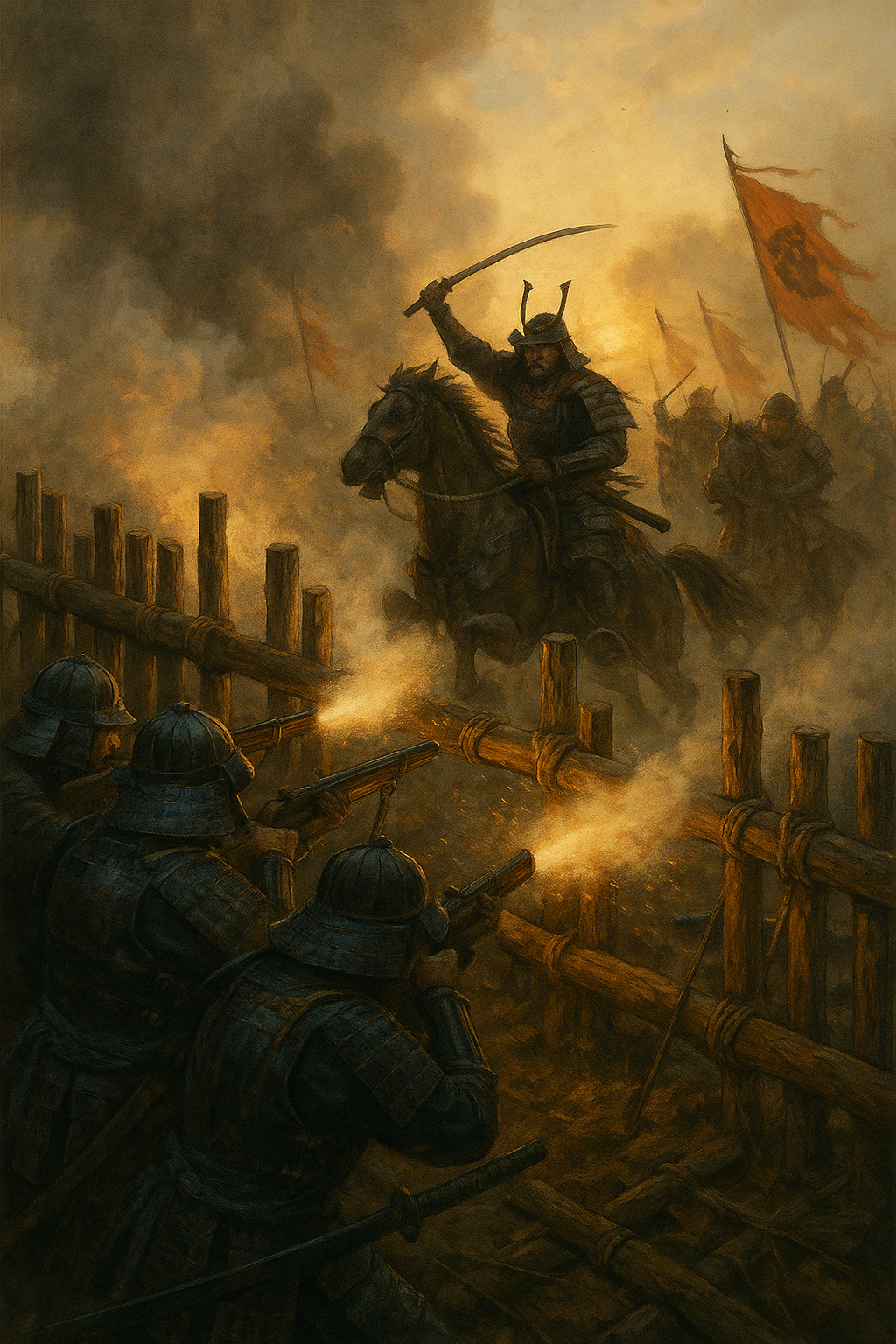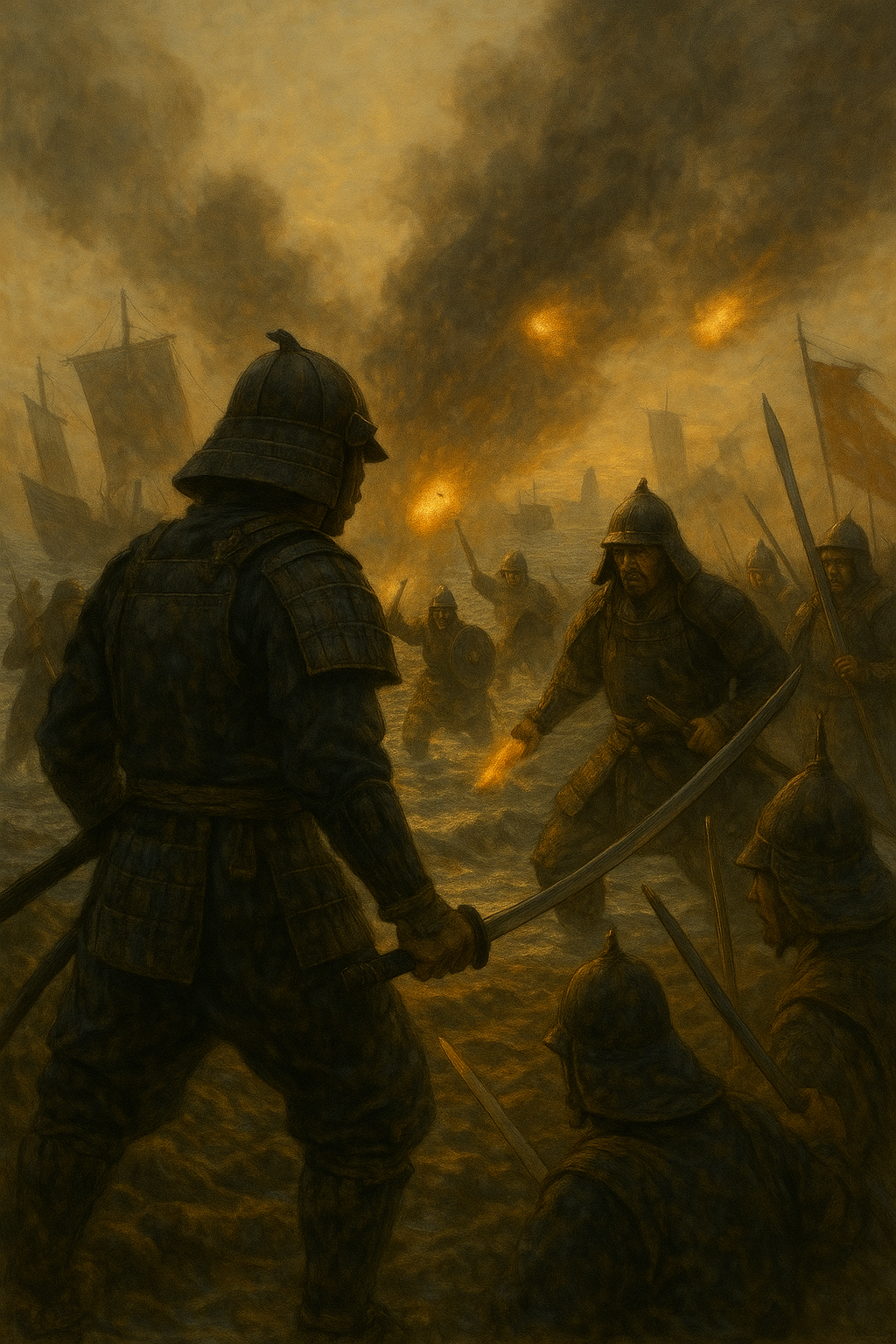September 14, 1600, late evening.
The valley of Sekigahara lay shrouded in mist, its quiet fields about to witness the most decisive battle in Japan’s history.
This was no ordinary clash between rival samurai. It was the showdown that would decide who would unite the nation.
On one side stood Ishida Mitsunari, a man often described as stern and cold, yet fiercely loyal to his late master, Toyotomi Hideyoshi. Mitsunari carried not only his own honor but also the duty of defending the Toyotomi legacy—the child heir who represented the old order.
On the other side was Tokugawa Ieyasu, cautious, calculating, and patient. Having outlived and outmaneuvered countless rivals, Ieyasu believed this was the moment to claim the future and forge a new shogunate.
Around their leaders, more than 150,000 samurai gathered beneath fluttering banners. Some knelt by dim campfires, silently polishing their swords, while others whispered prayers to ancestors for strength in tomorrow’s chaos. The smell of damp earth, burning wood, and sharpened steel filled the night air.
The atmosphere was heavy with tension. Every warrior knew the truth: this was not just a battle for land or pride—it was a struggle for the soul of Japan. Victory would shape the nation’s destiny for centuries to come; defeat meant ruin and oblivion.
In that solemn night, the samurai sat in silence, their armor gleaming faintly in the firelight, their hearts torn between fear and resolve. Beneath the star-filled sky, each man carried the weight of history on his shoulders, knowing that when dawn broke, his blade would help decide the fate of an entire country.



